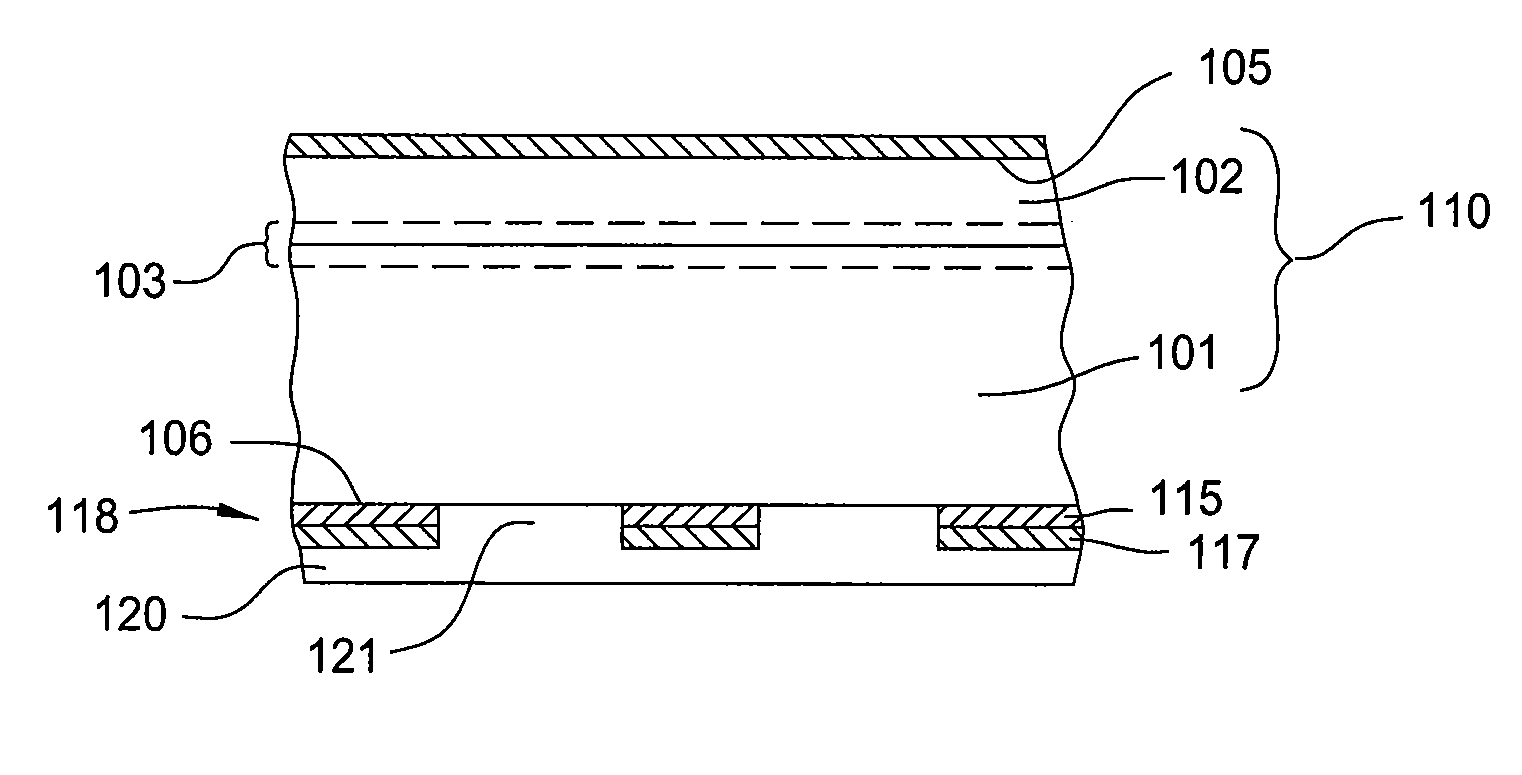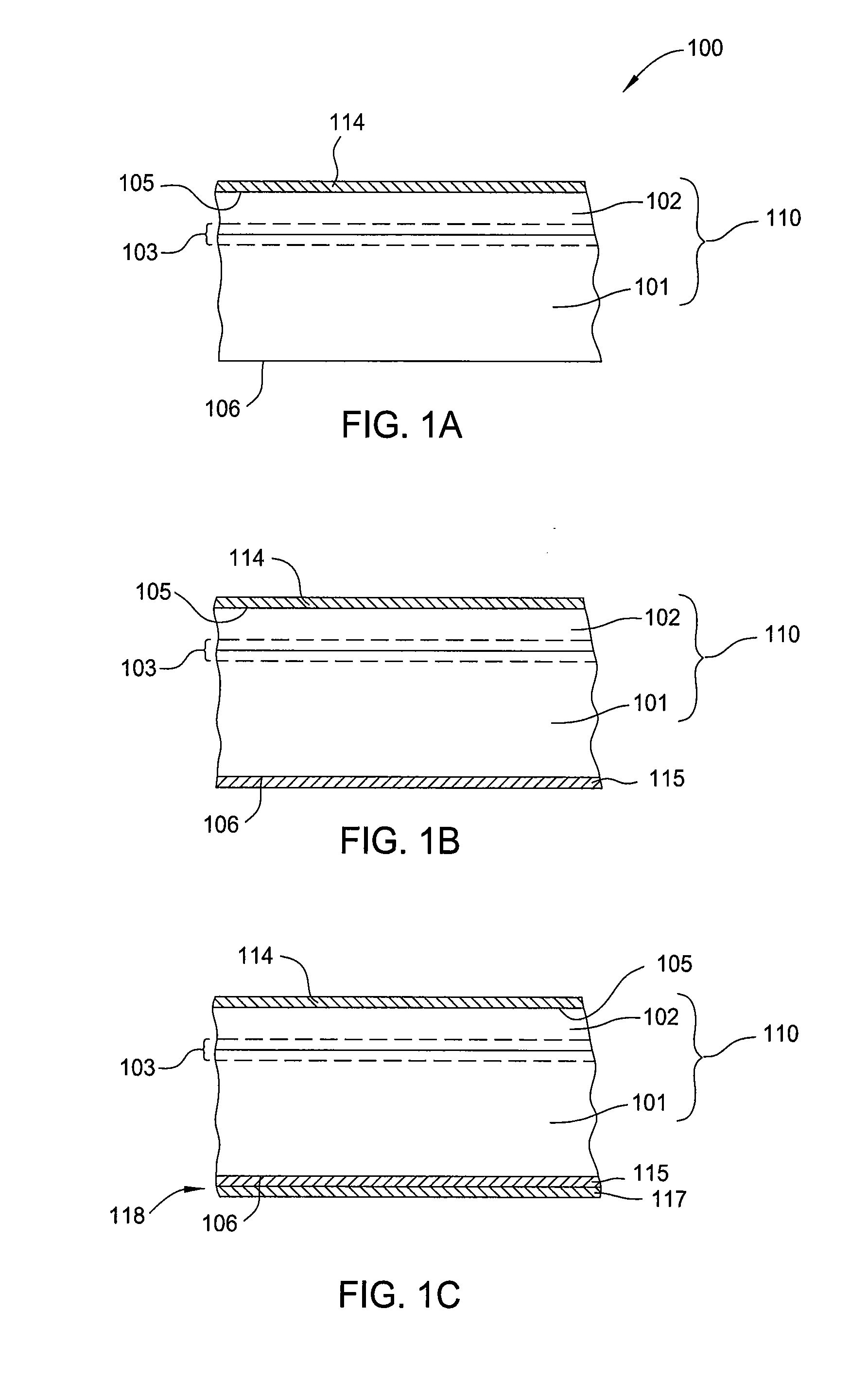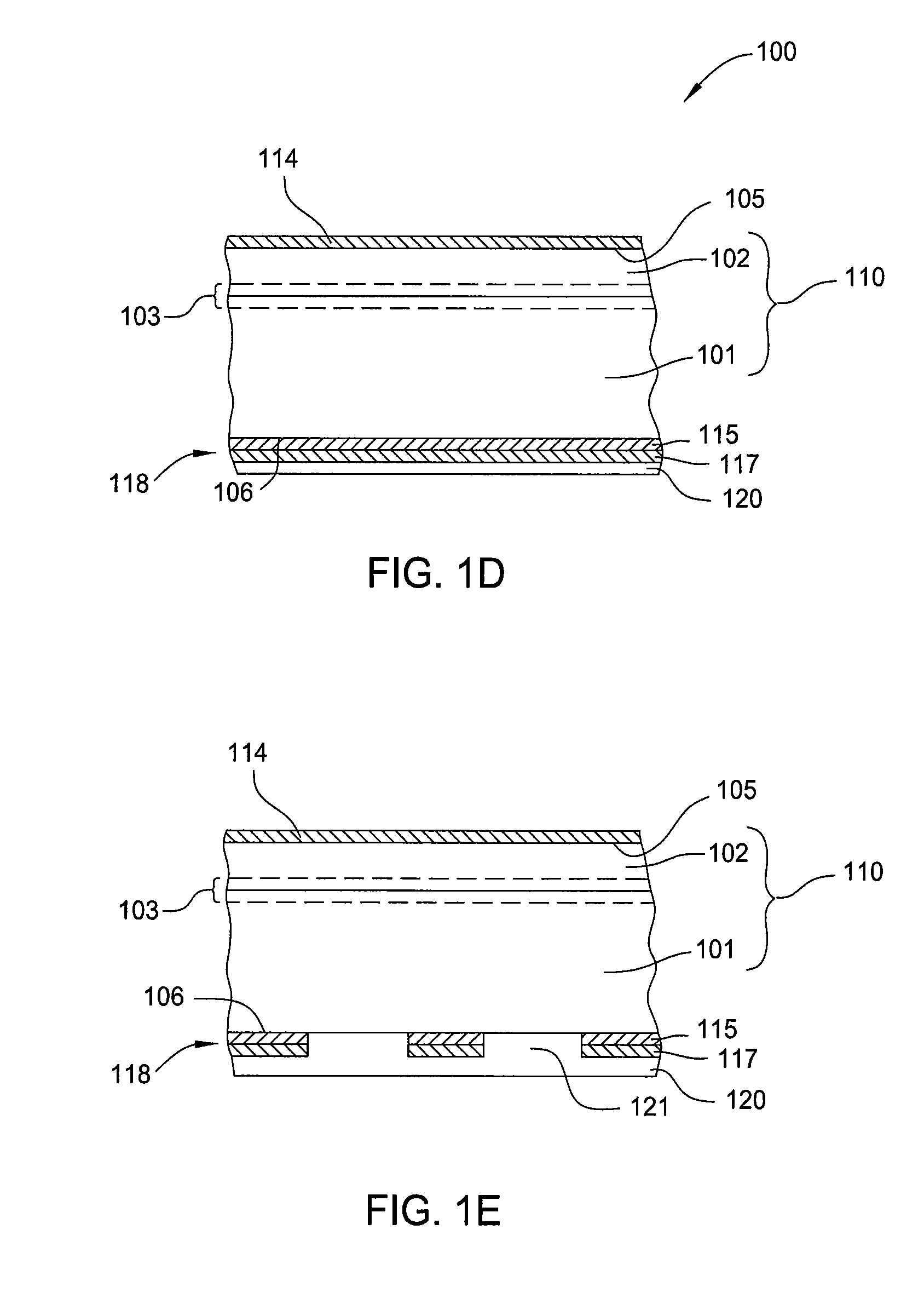Oxide nitride stack for backside reflector of solar cell
a solar cell and oxide nitride technology, applied in the direction of semiconductor devices, electrical equipment, nanotechnology, etc., can solve the problems of reducing affecting the efficiency of solar cells in converting incident light energy into electrical energy, and recombination ra
- Summary
- Abstract
- Description
- Claims
- Application Information
AI Technical Summary
Benefits of technology
Problems solved by technology
Method used
Image
Examples
example
Example 1
[0068]A silicon oxide sub-layer is deposited on a rear surface of a p-type doped region of a substrate for a solar cell device. A silicon nitride sub-layer is then formed over the silicon oxide sub-layer, thereby forming a multilayer rear surface passivation layer on a solar cell substrate. The silicon oxide and silicon nitride sub-layer are formed according to the following conditions shown in Table 1, and are for a substrate area of 1,200×1,300 mm, which may be used to carry up to 56 wafers in a 7×8 arrangement.
TABLE 1Silicon OxideSilicon NitrideSub-LayerSub-LayerDeposition Time (Sec.)1518Temperature (° C.)390390Pressure (Torr)1.21.5RF Power (Watts)5,50010,000Spacing (mils)1,2001,100N2O flow rate (sccm)15,000N / AN2 flow rate (sccm)N / A17,300TEOS flow rate (sccm)2,0002,000
[0069]The spacing is between the showerhead and the substrate support. The deposition rate for the silicon oxide sub-layer was 3,000 Å per minute and had a thickness of 750 Å. The deposition rate for the si...
PUM
 Login to View More
Login to View More Abstract
Description
Claims
Application Information
 Login to View More
Login to View More - R&D
- Intellectual Property
- Life Sciences
- Materials
- Tech Scout
- Unparalleled Data Quality
- Higher Quality Content
- 60% Fewer Hallucinations
Browse by: Latest US Patents, China's latest patents, Technical Efficacy Thesaurus, Application Domain, Technology Topic, Popular Technical Reports.
© 2025 PatSnap. All rights reserved.Legal|Privacy policy|Modern Slavery Act Transparency Statement|Sitemap|About US| Contact US: help@patsnap.com



